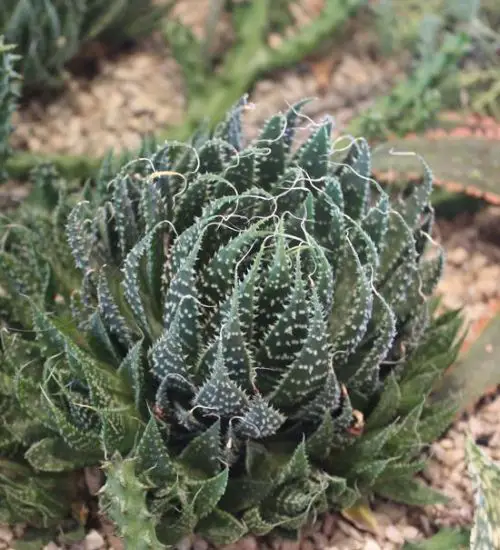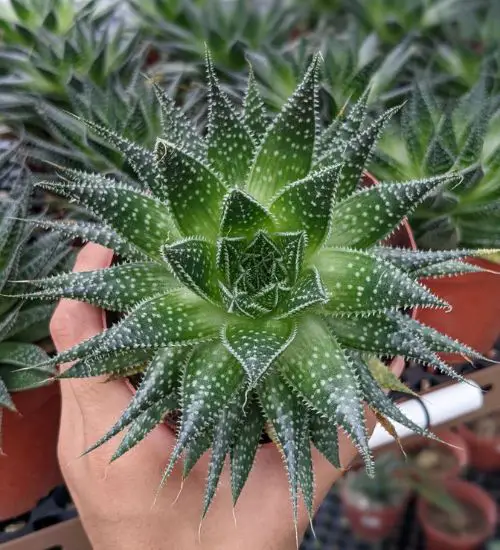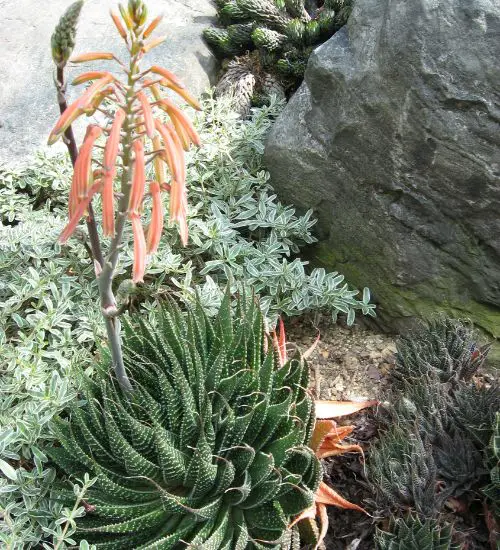Sun: Partial sun to partial shade
Water: Typical water needs for a succulent
Temperature: Zone 8a from 10° F to 15° F (-12.2 ° C to -9.4° C)
Winter Survival: Cold hardy to 0°C
Propagation: offsets
Flower: In the Spring
Flower Type:
Toxic: Generally non-toxic to humans and animals
Dormant: summer
Space Requirement: Indoors & Outdoors
Common Problems: Leaf diseases, pests
Where to buy Aristaloe Aristata?
Basc Care for Aristaloe Aristata
Watering
You can water your succulent more than often in extreme conditions but make sure that the soil is completely dry before watering your succulent again.
Can you water your succulent more than what its need? The answer is yes and no. In extreme conditions, you can water your plants more often when you notice the soil is completely dry.
Fertilizing
Only feed this succulent during its active growing seasons which means winter. Use the right fertilizer applied in the right amounts. Applying half-strength balanced fertilizer every month or so is recommended for optimal results.
Do not fertilize during summer as the plant is dormant.
Sun & Location Requirements for "Lace Aloe"
To make sure your Aristaloe Aristata X thrives, it should be placed in an area that provides partial sun and shade. Aim for four to six hours of direct sunlight per day with some protection from the midday heat.
As per this succulent profile, it is only able to stay healthy when the environment temperature is above the range of zone 8a from 10° F to 15° F (-12.2 ° C to -9.4° C).
Aristaloe Aristata is an incredibly resilient species that can survive temperatures as low as 0°F. It has a thick, waxy cuticle that helps protect it from frost damage, and its leaves are able to retain moisture in even the most arid environments. Its deep root system further helps it survive even the coldest winter conditions.
Any succulents in the group will need a medium space to grow. You can place your pot at your table or window. Since this plant needs more space than mini succulents, you should consider do not plant them together with other succulents/plants.
Propagation
One way to propagate Aristaloe Aristata is by offsets. Taking an offset from the mother plant and potting it into soil will give you a brand new succulent with minimal effort.
Succulents can be propagated easily by taking offsets from the mother plant and replanting them in fresh soil. The offset will eventually grow into a new succulent that is identical to its parent.
Toxicity

Aristaloe Aristata is generally non-toxic to humans and animals. However, the plant may contain certain toxins which can cause mild skin irritation if it is ingested or comes in contact with skin. Therefore, it is important to keep the plant away from children and pets for safety reasons.
Pests and Diseases
Aristaloe Aristata can be affected common pests and diseases like most of the other succulents such as mealybugs.
If you do spot any of pest signs, you can treat your succulent using below methods.
- Mealybugs: quarantine, clean infected plants, soapy water.
Besides that, to prevent serious health issues from happening, keep your succulent in a well-ventilated area and check it regularly for any signs of pests or health problems.


